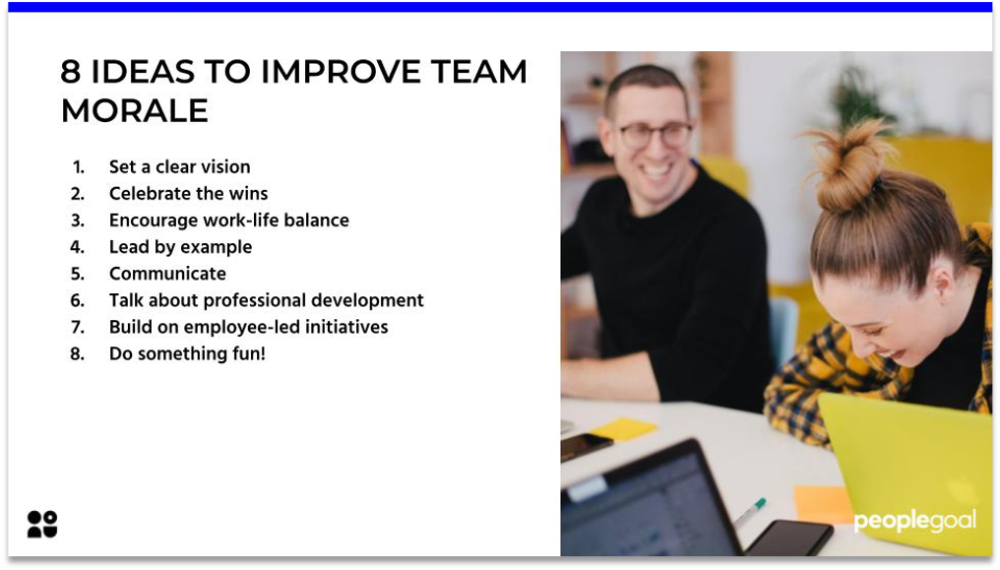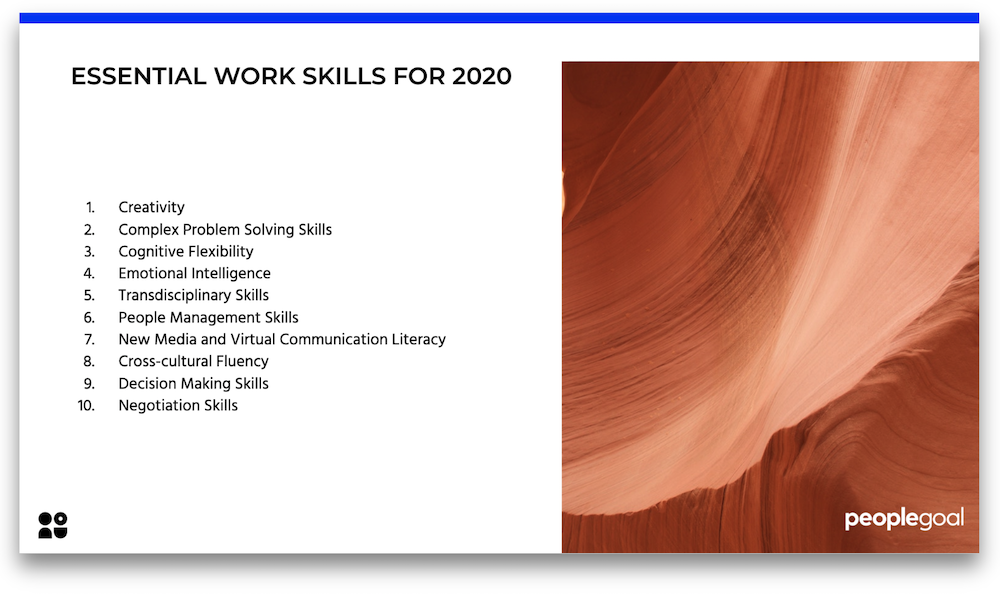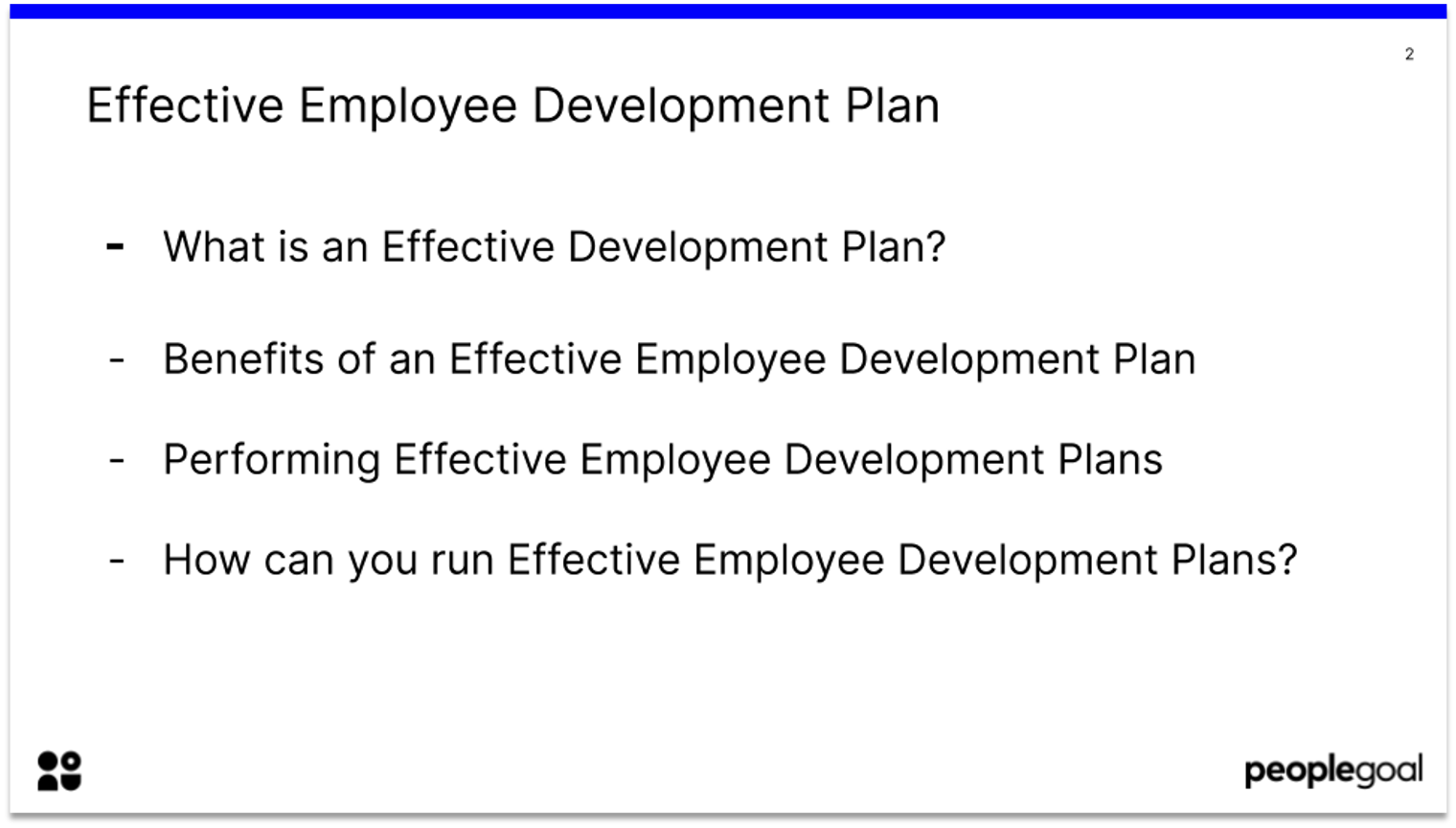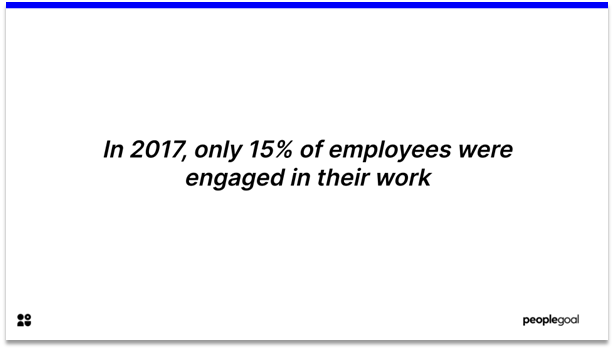mMeasuring employee engagement is a great starting point on the journey to a more resilient and collaborative culture. With your survey results in front of you, it’s time to address the key drivers of engagement.
What does an employee engagement survey measure?
Employee engagement can seem like a loose term. It’s important to think about what you are really measuring. Essentially, it is the level of commitment an employee feels for the company they work for.
Engagement relates to feelings of passion and shared purpose. Rather than simply showing up for the paycheck, highly engaged employees seek to make a meaningful contribution.
According to Beata Souders, engagement addresses our human need for ‘autonomy, competence and relatedness’. Opportunities to grow and to collaborate with others strengthen engagement.
Employee engagement surveys are a great way to check the temperature among staff.

Benefits of employee engagement
Employee engagement (EE) comes with numerous benefits. For individuals, caring about the work you do boosts mental health, self-esteem and improves productivity.
More widely, companies with engaged employees achieve 147% better outcomes per share. Engagement also reduces staff turnover. It even boosts customer relations!
With these benefits in mind, it’s easy to see how invaluable employee engagement surveys are. However, engagement is not a fixed entity.
The shifting seas of employee engagement
Gallup research has tracked US employee engagement’s up and downs through 2020 – and the results are striking. Engagement levels broke a 20-year record at 38% in May. A turbulent political situation matched with the pandemic saw a sharp drop in June.
What these shifts demonstrate is that EE is not static but responsive to external and internal forces. Perhaps most troubling was the finding that 54% of workers were ‘not engaged’ – they felt no personal or psychological attachment to their work. Whatever the results of your EE survey, be conscious that a pleasing result is not a ‘one-and-done’.
Employee engagement ebbs and flows, as your people experience new challenges. With your employee engagement survey’s findings, your strategy will be evidence-based. HR can target difficult areas and build more resilient employee experience.
"Perhaps most troubling was the finding that 54% of workers were ‘not engaged’ – they felt no personal or psychological attachment to their work"
The feedback loop – survey, review, strategize, recognize
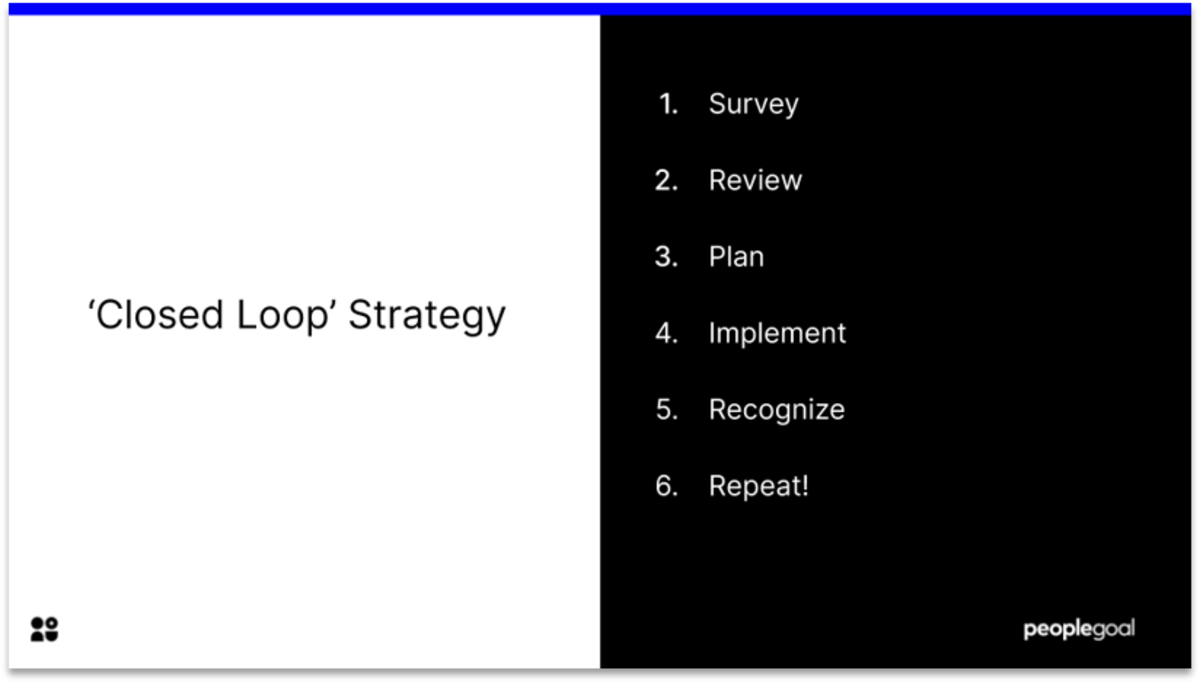
SHRM describes the process of employee surveys as a “closed loop”. The process can be summarized in this way:
Survey and Review : An engagement survey is only the start. Make sure you review the data before you arrive at an effective strategy.
Plan : Arrive at an effective course of action: your employee engagement strategy.
Implement : This requires timely communication. Alert managers to areas for improvement. Provide techniques and an actionable plan to improve their teams’ engagement. You should also inform employees of your plans to foster a more engaging company culture – so they can anticipate a better work life.
Recognize : Then ensure you recognize manager progress and efforts to improve the experience of their employees. Celebrate improved collaboration where it occurs. Highlight accomplishments and new policy through company intranets and other channels.
Repeat : Then repeat the process with your next annual survey. Timing is important – try to schedule surveys at less busy times of the year.
Alongside this, supplement your survey after-work with other fact-finding missions. Performance reviews, Pulse surveys, Well-being and Diversity & Inclusion surveys can deepen context.
These tips will help you use survey results for a great HR engagement strategy.
1) Make use of quantitative data
Employee engagement surveys allow HR professionals to benchmark progress. They provide feedback from employees on how your strategy is working.
SHRM recommends comparing these results to organizations of similar size or to national statistics. Present your data clearly for time-pressed managers and board members. Software can translate data into pie charts or other infographics for simple visuals.
Take out the highlighters and start analyzing. Are there evident red flags, for example critical responses to a Diversity and Inclusion question? Did certain teams tend to offer more negative viewpoints? Were some demographics less engaged than others?
Be thoughtful as you analyze, and mindful of less reliable results, for example questions with low response rates.
2) Don’t end there – do more research!
With the use of software, it’s relatively intuitive to create great employee engagement surveys. However, HR professionals should not end the investigation there.
Employee focus groups are a helpful way to involve the voices of staff members in your strategy.
These can be done virtually. Create a comfortable atmosphere in which employees can share their thoughts at ease. Your survey provides excellent quantitative data. But having staff members in the same (virtual) space provides an opportunity for HR to soundboard policy and strategy in a more natural way.
Qualitative data about behaviors, emotions and values are clearer in this format.
Start conversations about any problem areas in your survey. A low level of engagement in diversity and inclusion survey questions may not point to a specific solution. Instead, try engaging individuals in safe, open conversations might.
You owe it to your employees to gather plenty of information before drafting up a strategy.
3) Think in retrospect: What worked in the past?
Many companies are experiencing structural change to the way they motivate employees, particularly through remote work. In times of great change, we can view past trends irrelevant. In fact, reviewing previous success can help HR find the stepping-stones to future engagement.
Look back to the ancient lore of 2019, where Gallup research saw the highest rise in global employee engagement on record. It’s important to consider the reasons why, even if the climate is now very different.
Gallup’s researched highlighted that high-scoring areas were all under management’s control: team relations, clarity about job responsibilities and opportunities for development. They saw a correlation between coaching management styles and engagement success.
Research can inform on what drives engagement more widely. HR can then create a strategy more in line with current working practices.
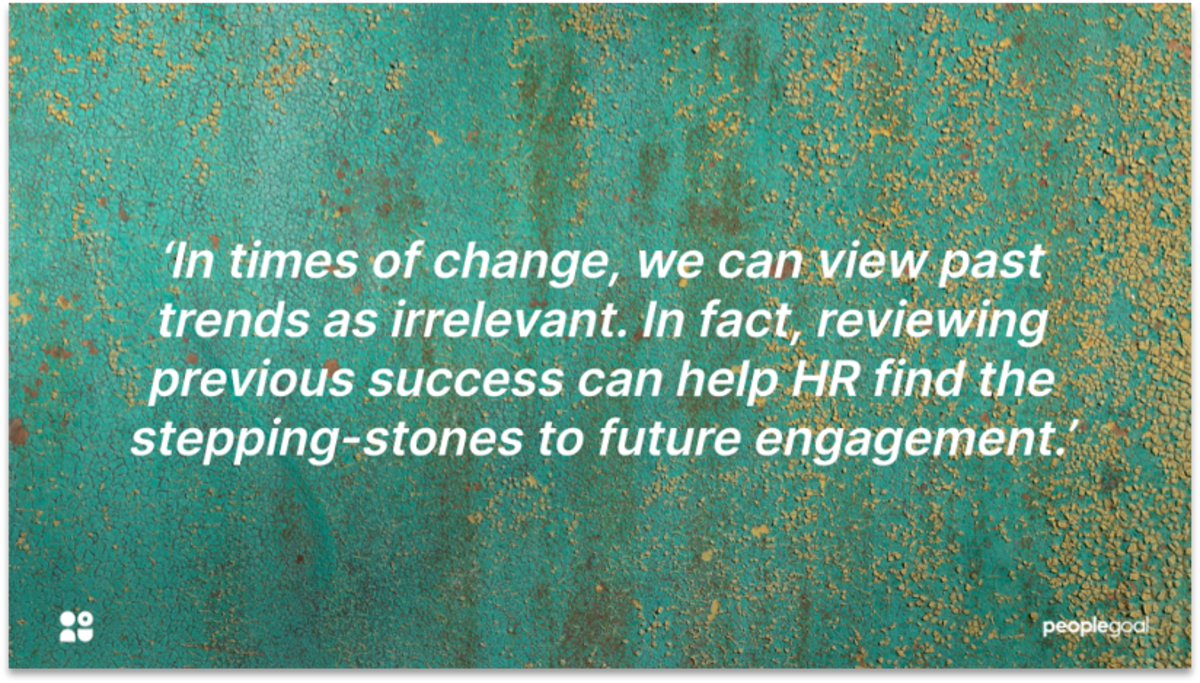
4) The role of managers in engagement
In Gallup’s 2018 engagement study, quality of leadership accounted for 70% of team engagement. Managers and leaders clearly play an essential role.
If HR included an employee engagement survey question about organizational culture, this can be a good indicator of managerial performance. Managers are responsible for ensuring teams work in a positive work environment.
Remember, the goal here is not to question a manager’s competency – unless there is evident reason to do so. Survey results can help HR to be productive and informative with managers about where there are areas for improvement. Work-life balance issues are easily remedied – when managers communicate empathetically and create a plan to help.
Gallup also recommends a coaching management style based upon its findings.
Quoted in Harvard Business Review, Sir John Whitmore says coaching management is about “unlocking people’s potential to maximize their own performance.” HR can offer guidance to managers about how to adopt this style. Rather than just imparting knowledge, coaches give employees the confidence to take the initiative.
In Gallup’s 2018 engagement study, quality of leadership accounted for 70% of team engagement
5) How learning and development can boost EE
87% of millennials view professional development and career growth as significant. Learning and development are crucial to employee engagement.
Nothing compares to the psychological boost of learning a fresh new skill – whether it’s a language or the guitar. How to replicate this positive learner’s attitude in a work setting?
Coaching can help – as managers formulate development plans with employees and invest time in their career goals.
Rethink performance reviews. By linking reviews to L&D, they become more constructive. You are more likely to see employees grow if they are given the resources. HR professionals should point them in the direction of online training, or organize peer learning activities.
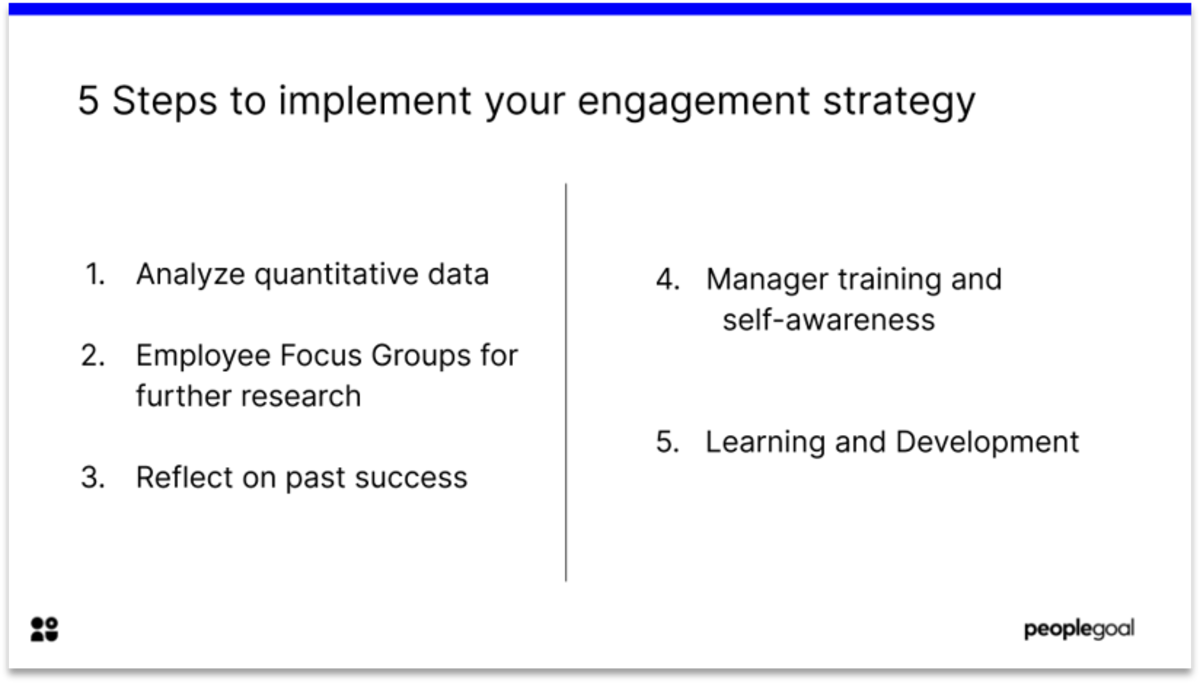
Employee Engagement Surveys are only the first step
An employee engagement survey is just the beginning. It presents an outline of your company culture. Then HR leaders draw up the dots – gathering more details from employees and asking the right questions.
Solutions will require trial and error, as different personalities are motivated in different ways. Be open to shifting your strategy. Remember our summary of SHRM’s ‘closed loop’: Review, implement, recognize, repeat!
If you want to take a deeper dive, why not read our Employee Engagement Essential Guide?
Ready to 3x Your Teams' Performance?
Use the best performance management software to align goals, track progress, and boost employee engagement.


